Mastering the 13x13 Baking Sheet: A Complete Guide
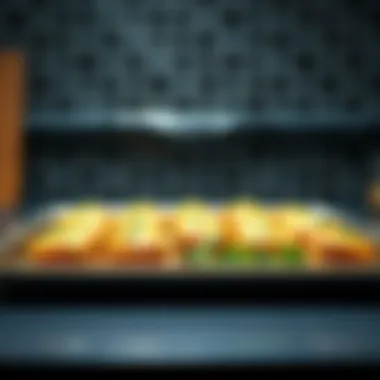
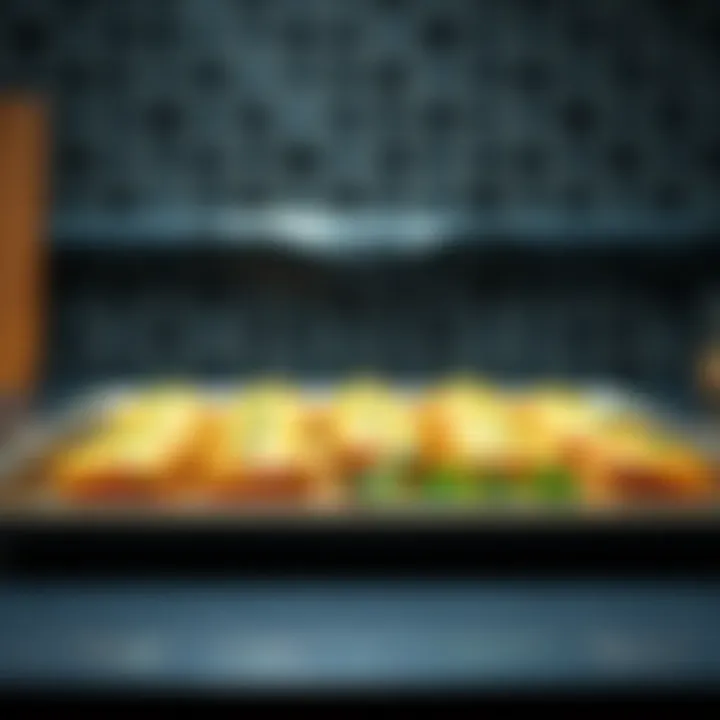
Intro
Baking is an art form that combines science, precision, and a pinch of love. With countless tools available, the 13x13 baking sheet often doesn’t get the recognition it deserves. This unassuming piece of kitchen equipment is not just a wide rectangle of metal; it opens a world of culinary possibilities. Whether you're a novice baker or a seasoned chef, understanding the advantages, uses, and care of the 13x13 baking sheet can elevate your cooking game.
This guide aims to demystify this versatile tool, shedding light on its strengths and diverse applications in various kitchens. From crafting scrumptious treats to preparing savory dishes, the insights provided here are designed to enhance your culinary ventures. If you've ever wondered about the best practices for using this baking sheet or the types of creations you can whip up, you're in the right spot!
Understanding the 13x13 Baking Sheet
The 13x13 baking sheet is more than just another piece of kitchen gear; it’s a versatile tool that can elevate your culinary creations. In this guide, we dive deep into its fundamental features and why understanding these attributes matters in both casual and serious cooking environments. A baking sheet of this size offers ample platform for a variety of dishes, from brownies to casseroles, while being compact enough for many ovens.
Dimensions and Specifications
The dimensions of a 13x13 baking sheet are tailored for optimal cooking space without overwhelming your oven. Typically measuring 13 inches square, this size is perfect for recipes that require an even cook, while also being appropriate for a more modest kitchen layout. The uniform shape ensures that heat distribution occurs evenly, preventing any unwelcome surprises like only half of your batch being undercooked. The thickness of the material can also play a role in how well it performs; thinner sheets may get too hot or warp, while heavier ones tend to deliver that consistent baking environment desired by many cooks.
Material Variations
Aluminum
Aluminum is widely regarded for its excellent heat conductivity. This means that an aluminum baking sheet can heat up quickly, allowing for evenly baked items. One major plus of aluminum is its light weight, which makes handling a breeze. Additionally, aluminum sheets resist rust, making them easy to maintain over time. However, it's worth noting that pure aluminum may react with acidic ingredients, which can affect taste; thus, anodized aluminum is often recommended for those who bake with tomatoes or citrus. Still, it's a top choice for many due to its performance.
Stainless Steel
Stainless steel, on the other hand, is prized for its durability and strength. Unlike aluminum, it won’t warp easily under high temperatures. The shine on stainless gives your kitchen a touch of class. However, heat conduction isn’t a primary forte—this means that items cooked on stainless steel may not brown as evenly without a bit of extra attention. Cooks who prefer heavy-duty equipment often gravitate towards stainless steel, appreciating that it can endure rigorous use without losing its integrity.
Non-stick Coating
The allure of non-stick coated baking sheets lies in their ability to virtually eliminate sticking issues. This is especially handy when working with delicate items like cookies and brownies that tend to cling. Moreover, non-stick surfaces minimize the need for additional oils or sprays, which can be a win-win for those counting calories. One caveat, however, is the potential for scratches over time, which might compromise the coating and lead to food sticking. Generally, gentle cleaning is recommended to prolong its lifespan.
Glass
Using a glass baking sheet is less common but certainly worthwhile. Glass is known for its ability to evenly distribute heat; it’s also non-reactive, making it ideal for cooking with acidic foods. One of the key characteristics of glass is transparency, which allows cooks to monitor browning without opening the oven. However, glass is more fragile than its metal counterparts and requires careful handling, especially with thermal shock when moving from hot to cold environments. For those willing to embrace this risk, glass serves well in slow-cooked dishes and casseroles.
With an understanding of these various materials and specifications, the 13x13 baking sheet can become an indispensable ally in the kitchen. It’s important for home cooks and food enthusiasts to consider their individual cooking styles and preferences when selecting which baking sheet to invest in. Each material comes with distinct benefits, but the best choice aligns with both functionality and personal needs.
Culinary Applications of the 13x13 Baking Sheet
The versatility of a 13x13 baking sheet extends far beyond the simple act of baking. It's a handy tool in a home cook's arsenal that can elevate everyday meals into something special. Its unique size is perfect for a variety of culinary tasks that range from baking to roasting and beyond. In this section, we will explore how to optimize the use of this baking sheet in multiple cooking contexts, helping to maximize your kitchen experience.
Baking Basics
Using a 13x13 baking sheet for baking purposes opens up a world of options. This size is ideal for preparing treats that are not too small but also not overwhelming. For amateurs or seasoned bakers alike, focusing on the basics is crucial. Whether it's brownies or even a classic lasagna, this shape provides even cooking results with a perfect balance of moisture and flavor. It's easy to throw together a one-pan meal or dessert, keeping clean-up simple and efficient—because let’s face it, no one enjoys scrubbing multiple dishes.
Some important tips for baking with a 13x13 sheet include:
- Preheating the oven: Always start with a preheated oven to ensure even baking.
- Use parchment paper: Lining the sheet helps with easy removal of baked goods and simplifies cleanup.
- Watch cooking times: Unlike round pans, the edges of a square sheet tend to cook faster, so keep an eye on the clock.
These straightforward practices can lead to successful baking experiences that can delight anyone at the dinner table.
Roasting Vegetables
Roasting vegetables on a 13x13 baking sheet is one of the most rewarding uses of this kitchen staple. The flat surface allows for ample space to spread out veggies, ensuring they roast evenly, achieving that nice caramelization that brings out their natural sweetness. With some olive oil, salt, and pepper, one can turn ordinary vegetables into a standout side dish.
Considerations when roasting include:
- Cut uniform pieces: This helps ensure they cook evenly.
- Don’t overcrowd the pan: Leave space between pieces for proper air circulation.
- Toss halfway through: This promotes even browning.
By following these simple guidelines, your roasted vegetables will not only taste fantastic but also attract attention at the dinner table.
Overhead Cooking Techniques
When it comes to overhead cooking methods, a 13x13 baking sheet shines with its adaptability. Its design accommodates various techniques beautifully.
Broiling
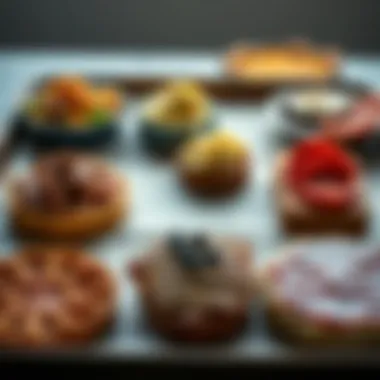
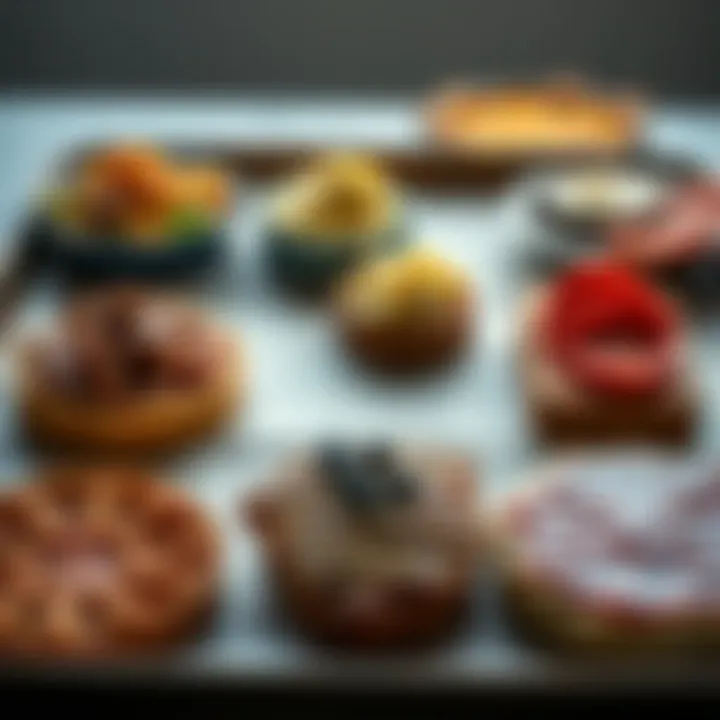
Broiling is all about high heat from above. The 13x13 baking sheet works well under the broiler as it allows ingredients to lie flat, promoting rapid cooking. Here, the distinct characteristic of high-heat exposure can sear meats or caramelize cheese on a casserole in mere minutes, which makes it a favorite for quick meal prep. A key advantage of broiling is the pronounced flavors that develop in a short time.
However, caution is crucial because foods can burn quickly if left unattended. Always keep an eye on the food and be prepared to flip or shift it around for even cooking.
Toasting
Toasting is another excellent application of this baking sheet. It allows for a range of items to be lightly toasted, from nuts to bread, enhancing their flavors remarkably. A notable feature of toasting is that it can revive stale bread, transforming it into crisp croutons ideal for salads.
The downside of toasting is that it may require constant monitoring to prevent over-toasting. Setting a timer can be a lifesaver, as toasted items can go from perfect to burnt in the blink of an eye.
In summary, whether it's baking, roasting, or experimenting with overhead techniques like broiling and toasting, the 13x13 baking sheet provides immense versatility for culinary application, enabling anyone from novices to seasoned chefs to create delightful meals while keeping efficiency at the forefront.
Choosing the Right Baking Sheet
Choosing the right baking sheet is pivotal for anyone serious about cooking. The 13x13 baking sheet, in particular, is a versatile tool in the kitchen, but not all baking sheets are created equal. Understanding how to select just the right one can enhance your cooking experience significantly. Think of the baking sheet as the canvas on which culinary masterpieces are created; a poor choice can lead to uneven baking or even ruined dishes. So, what should you consider when selecting your perfect baking companion?
When it comes to the size, a 13x13 baking sheet typically offers a good balance between surface area and manageability. It's roomy enough for a variety of dishes—from lasagna to brownies—yet not so big that it becomes cumbersome. However, it’s prudent to compare it against other baking sheet sizes available. In doing so, you can better assess how frequently you'll need that extra space or how it fits into your oven. Some might find that a 9x13 is just a tad more comfortable for everyday use, while others appreciate the abundant space that a larger option might provide particularly when baking for family gatherings.
"The right baking sheet can make all the difference, turning a simple dish into something spectacular."
Comparing Sizes
When looking into comparative sizes of baking sheets, the differences can be staggering. A 13x13 baking sheet stands proudly opposed to traditional sizes like an 18x13, each suited to specific tasks.
- 13x13 baking sheet: Perfect for small to mid-sized dishes, enabling optimal heat distribution.
- 18x13 baking sheet: Offers more room for multiple items but can over-crowd the oven space, leading to uneven cooking.
- 9x13 baking sheet: A more compact option, ideal for smaller households or if you're cooking fewer portions.
Reading into what size works best is more than just preference; it often comes down to kitchen space, oven dimensions, and personal habits. Think about the quantity of food you generally prepare and choose accordingly. A well-chosen size enhances flexibility in meal prep and can save both time and effort.
Selecting Appropriate Materials
Now let’s talk about materials. Each can impart its own character and influence the performance of your baking sheet. When aiming for reliability, you might consider:
- Aluminum: Known for even heat distribution, aluminum baking sheets are often lightweight and easy to handle. They conduct heat wonderfully, making them perfect for a range of recipes.
- Stainless Steel: While they may not conduct heat quite as well as aluminum, stainless steel baking sheets are incredibly durable. They resist warping and provide a sturdy surface for baking needs.
- Non-stick Coating: These are a go-to for those who want ease in clean-up and reduced sticking. The coating, often reinforced, can provide a baking surface that's a delight to use. However, caution is necessary as high temperatures can degrade the coating over time.
- Glass: Baking sheets made of glass offer excellent heat insulation. They can double as serving dishes too. However, sudden temperature changes can pose a risk of breaking.
In choosing the right material, it’s essential to consider the dishes you plan to create, the longevity you desire from your bakeware, and the convenience of use. Each material has its strengths and weaknesses, and knowing these facets allows for a more informed decision.
Recipes Perfect for a 13x13 Baking Sheet
In the ever-evolving landscape of culinary practices, the 13x13 baking sheet emerges as a multipurpose gem, especially when it comes to creating beloved recipes. This section delves into why this size is particularly advantageous for various dishes, and reveals the depth of possibility it offers. It isn't just about baking and roasting; it’s about making delights that make a kitchen vibrate with activity and scrumptious scents. By using this baking sheet, one can effortlessly shift from savory to sweet with minimal fuss and tidy clean-up.
Savory Dishes
Lasagna
Lasagna cooked in a 13x13 baking sheet embodies a fusion of wholesome ingredients layered to perfection. This dish is a staple in many households, bringing families together. The rectangular shape allows for even baking of those rich, meaty layers, ensuring each slice has a hearty portion without crumbling apart.
An essential characteristic of lasagna is its ability to be customized. From switching up the type of cheese to layering in roasted vegetables, the options are endless. The generous size of a 13x13 baking sheet means that one can prepare a lasagna large enough to feed a crowd, ideal for gatherings or meal-prepping for the week ahead.
However, it’s worth noting that lasagna can be a bit tricky for first-timers. Overbaking can lead to dry noodles, while too much sauce might create a soupy mess. With a careful eye, though, your lasagna will emerge as a crowd-pleaser.
Brownies
Brownies baked in a 13x13 baking sheet are a timeless classic every knockout dessert deserves. One of the gleaming advantages of using this baking sheet lies in the abundance of brownies you can create at once. With an ample area to work with, you can yield a full batch that satisfies a sweet tooth party without the fuss of multiple small pans.
The unique feature of brownies made in this format is the crisp edges they develop, which many aficionados yearn for. It’s all about balancing that fudgy center with a delightful crunch around the edges. Plus, it’s also easier to experiment with textures by mixing in nuts, caramel, or even cream cheese, all fitting perfectly into this sheet.
Though brownies are usually a crowd-pleaser, one must be aware of the timing. Overbake them even slightly and one can end up with dry, crumbly pieces. Master the timing, and they’ll be as gooey as a chocolate lover dreams.
Casseroles
A 13x13 baking sheet is ideally suited for casseroles, as its depth gives ample space for layering ingredients. These dishes often involve a medley of proteins, vegetables, and a mix of sauces and cheeses, creating a hearty meal that warms the heart and tummy. The aspect of casseroles that truly shines is their versatility; one can switch up ingredients based on seasonal produce or dietary preferences, ensuring freshness in every bite.
The key feature of casseroles is how they meld flavors together, creating a delicious complexity that’s sometimes hard to achieve with simpler dishes. The wide base of the 13x13 format allows even cooking throughout, ensuring that all elements are evenly heated.
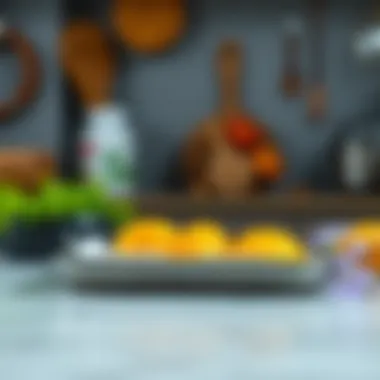
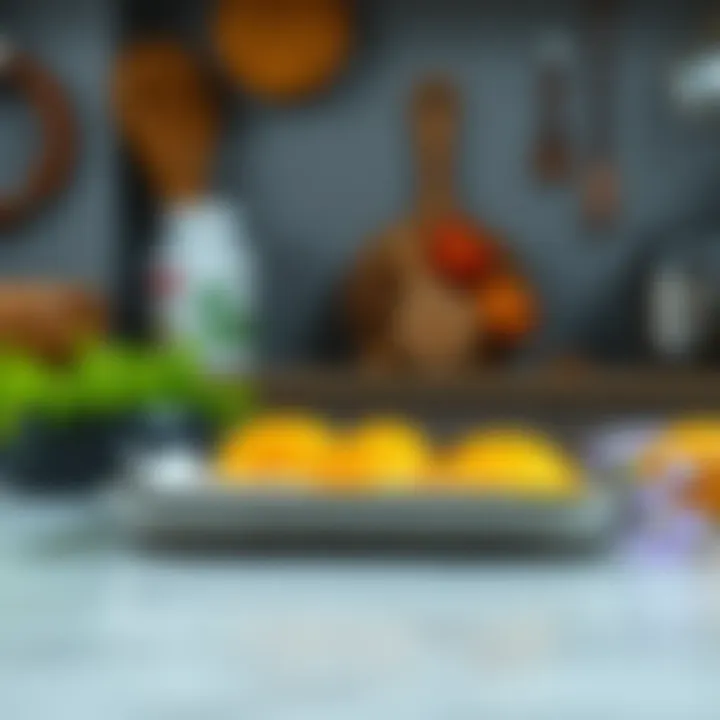
One downside can be the time it takes to bake; casseroles, being robust and often creamy, require careful attention to avoid undercooking. However, once one gets the hang of it, using this baking sheet makes whipping up dinner a breeze.
Sweet Treats
Sheet Cakes
Sheet cakes baked in a 13x13 pan are a delightful shortcut to satisfying a crowd's sweet cravings without the hassle of intricate designs or layers. They are straightforward to prepare and can be served straight from the pan. This simplicity is particularly appealing for beginner bakers who may find traditional round cakes daunting. Sheet cakes allow for creative icing and decoration directly on the surface, adding a flair of personality.
The golden quality of sheet cakes is their adaptability. From chocolate to vanilla, red velvet to lemon, there's a flavor for every occasion, making them a beneficial choice for potlucks or birthday parties. One should be cautious, however, as these cakes can dry out if baked too long. Knowing the right time to pull them from the oven is crucial for that moist texture everyone loves.
Fruit Crumbles
Fruit crumbles prepared in a 13x13 baking sheet are one of the utmost comforting desserts you can serve. The beauty is in their rustic nature, allowing for a variety of fruits—be it raspberries, apples, or peaches—to take the center stage. This quality not only celebrates seasonal produce but also means one can easily experiment with combinations that suit personal tastes.
The unique aspect of a crumble is its crunchy topping, which contrasts beautifully with the sweetly baked fruits beneath. The size of the sheet contributes significantly; a thicker layer of fruit sinks below with a marvelous crusty topping formed above. Folks should keep in mind that it's best served warm and paired with a scoop of ice cream or whipped cream for that touch of indulgence.
As delectable as they are, crumbles can also become soggy if the fruits are too juicy or if they are prepped too far in advance. It's important to find that balance of ripeness for the fruit so that it cooks perfectly with the oat topping.
By exploring diverse savory and sweet options, the 13x13 baking sheet proves itself to be an indispensable kitchen companion, enabling cooks of all levels to express their creativity.
Care and Maintenance of the Baking Sheet
Taking care of your 13x13 baking sheet is akin to maintaining a trusty pair of shoes or a well-loved knife. The benefits extend beyond mere aesthetics; proper care ensures longevity, optimal cooking performance, and, ultimately, better-tasting dishes. Ignoring maintenance could lead to uneven cooking, sticking issues, or worse—corrosion and wear that could affect your culinary creations. Solid care practices are essential to keep this versatile kitchen tool in top-notch condition.
Cleaning Techniques
Cleaning a baking sheet might sound straightforward, but there are nuances that can make or break its longevity. First off, avoid aggressive scrubbers that scratch the surface. Instead, opt for gentle sponges or cloths that can wipe away residues without causing damage. For aluminum sheets, a simple mix of baking soda and water can create a paste that lifts stains like nobody's business. Apply it, let it sit, and then scrub lightly for a sparkling finish.
For non-stick varieties, it's crucial to let the sheet cool completely before rinsing. Otherwise, thermal shock can warp the material.
Thus, a mild dish soap combined with warm water usually cuts through grease. Avoid soaking any sheet, as it can warp and lead to uneven cooking.
If you ever notice stubborn stains, you might try a mixture of equal parts vinegar and water to soak those areas for about 30 minutes, then rinse thoroughly—just don’t forget to dry it well.
Pro Tips
- Always clean after each use, no matter how small the mess.
- For baked-on food, use boiling water to loosen residue before proper cleaning.
Storage Solutions
Proper storage of your 13x13 baking sheet is equally important as keeping it clean. If you toss it into a cabinet with other pots and pans without protection, scratches are bound to happen. One easy solution is to utilize dividers or nesting organizers in your cabinets, allowing for safe stacking. If that's not feasible, consider a hanging solution on wall-mounted racks, which not only protects the sheet but also keeps it within easy reach.
At times, you may find that your baking sheets fit snugly into each other. This can be practical; however, place a paper towel or cloth between them. This prevents scratches and keeps everything in good shape. When you can see the baking sheet’s surface clearly—clean and scratch-free—it's not only more appealing but also more effective when you get to cooking.
"A clean and well-maintained bakingsheet makes for a happy kitchen!"
In summary, with a blend of thoughtful cleaning techniques and storage solutions, you can extend the life of your baking sheet considerably. Keep it stovetop-ready so you can whip up those delish dishes without a second thought.
Troubleshooting Common Issues
In the culinary world, even the most seasoned chefs encounter some hiccups along the way. When it comes to using a 13x13 baking sheet, these issues can lead to frustration and possibly ruin a dish. Understanding common problems like sticking and uneven cooking is essential for achieving optimal results in the kitchen. These hurdles not only affect the quality of your cooking but can also dampen your enthusiasm for trying new recipes. Addressing these concerns proactively contributes to a more enjoyable baking experience and helps develop skills that improve over time.
Sticking
Sticking is one of the most frequent complaints about baking sheets, and it can occur for a variety of reasons. When your brownies or roasted veggies cling stubbornly to the surface, it becomes more than a minor annoyance. Here are a few culprits behind this sticky situation:
- Insufficient Greasing: Before pouring batter or placing ingredients on your 13x13 baking sheet, it's vital to grease it properly. Using oils or butter not only creates a non-stick barrier but also adds flavor.
- Inadequate Preheating: Failing to preheat your oven can lead to sticking as the food might start to cook unevenly. Make sure to give your oven enough time to reach the desired temperature before placing your sheet inside.
- Choice of Material: Non-stick pans generally fare better in the preventing of sticking issue. Aluminum sheets can sometimes lead to sticking, especially when right out of the oven.
To minimize sticking:
- Line your baking sheet with parchment paper. This not only prevents sticking but also makes for easier cleanup.
- Use a light sprinkle of flour if you are baking items that need a firmer base, like cakes or certain casseroles.
- Let your dish cool slightly before attempting to remove it from the baking sheet. This can create enough of a separation for easier lifting.
A little bit of care with greasing and preparation goes a long way, keeping your culinary creations intact and delicious.
Uneven Cooking
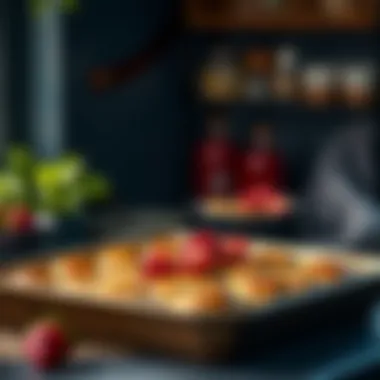
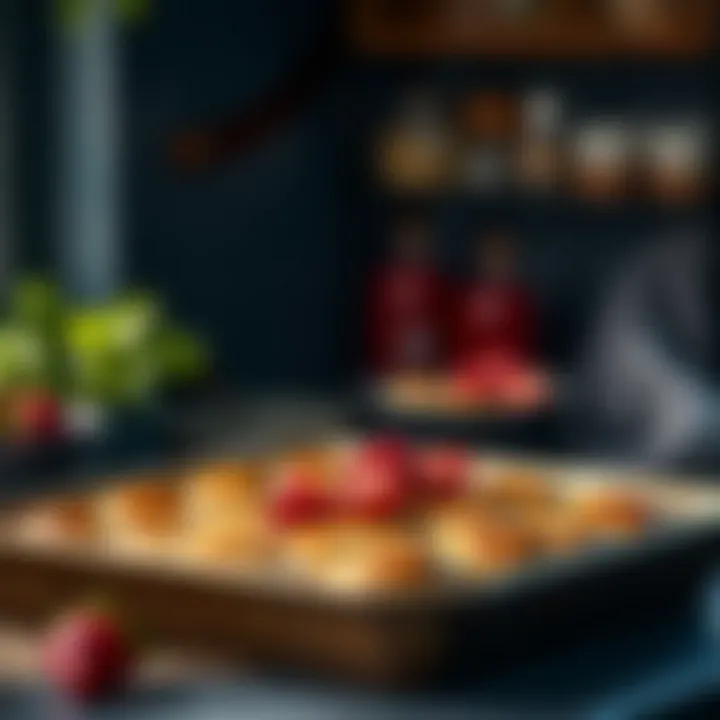
Uneven cooking is another common woe that can plague your baking endeavors. Imagine pulling a batch of cookies from the oven, only to find that some are perfectly golden brown while others are barely cooked. Understanding why this happens will help you troubleshoot the problem effectively:
- Uneven Oven Temperature: Oven hot spots can lead to varying levels of heat distribution. If your baking sheet isn't placed in the middle of the oven, some parts may cook faster than others.
- Overcrowding the Sheet: Loading up your baking sheet to the brim can create barriers to the flow of air, preventing even cooking. It’s better to leave some space for air circulation, allowing the heat to work its magic uniformly.
- Choosing the Wrong Material: Not all baking sheets are created equal. Some materials may retain and distribute heat better than others. For instance, heavy-duty aluminized steel often performs better at even cooking than cheaper options.
To ensure that your dish cooks evenly:
- Always rotate your baking sheet halfway through the cooking time. This helps to balance any hot spots present in your oven.
- Make use of an oven thermometer to check accuracy in temperature. If your thermostat is off, adjustments might be necessary for even results.
- Opt for a higher rimmed baking sheet to better contain heat and moisture when roasting or baking, as this can lead to more consistent cooking outcomes.
By recognizing and addressing these common issues associated with a 13x13 baking sheet, you can enhance your culinary skills. With a little preparation and attention to detail, the chance of facing these barriers can diminish, allowing your passion for baking to shine.
Innovative Uses for the 13x13 Baking Sheet
The 13x13 baking sheet is often viewed through a narrow lens, primarily as a tool for baking cakes or roasting veggies. However, its adaptability moves far beyond these basic applications. Understanding the innovative uses for this kitchen staple can truly elevate one's cooking game. The 13x13 size strikes a balance, perfect for kitchen tasks requiring space without overwhelming your countertop.
From crafting personalized pizzas to efficiently baking multiple dishes at once, the 13x13 baking sheet shows its versatility. By utilizing this sheet creatively, home cooks can optimize time, reduce mess, and experience a wide array of culinary triumphs.
Creating Custom Pizzas
Making pizza at home can be a delightful experience, and using a 13x13 baking sheet allows for a unique take on this beloved dish. Instead of the traditional round shape, this rectangular sheet gives you the option to craft square slices, which can be incredibly convenient for serving. Here are a few reasons to consider when making pizzas using this size:
- Configuration Flexibility: You can customize the toppings and sections to cater to different tastes all in one go. If you've got kids, you can make half cheese and half pepperoni, or get gourmet with veggies on one end.
- Crispy Crust: The flat surface ensures even heat distribution which promotes a perfect crisp crust. It's best to preheat the baking sheet before adding the dough. This tip can help achieve that sought-after crunch.
- Experimentation Opportunities: From a classic Margherita to a barbecue chicken pizza, the possibilities are endless. Don’t forget to play with different sauces and cheeses. The 13x13 sheet is a canvas waiting for your culinary art!
Using a pizza stone? Forget it—just use your trusty baking sheet!
Baking Multiple Items
Another impressive feature of the 13x13 baking sheet is its ability to accommodate multiple dishes at once, making it a time-saver for busy kitchens. Perhaps you've organized a family gathering or a quick dinner for friends, the ability to manage several items on one sheet translates to less chaos and more fun. Here’s how to maximize this benefit:
- Batch Cooking: Suppose you’re preparing roasted vegetables while also baking some brownies. You can line the baking sheet with parchment paper and arrange your veggies on one side while leaving space for the brownies. This method not only saves time but also streamlines the cleanup as well.
- Variety of Dishes: Just imagine - you could whip up mini-quiches or a shaik pasta while the brownies are finishing off! It’s a one-stop-shop for feeding a crowd and making the cooking process a little simpler.
- Utilize Dividers: If you're worried about the flavors mixing, it might help to utilize dividers or silicone mats to keep different items separated, ensuring each dish maintains its unique taste.
Utilizing the 13x13 baking sheet not just expands your cooking options, but also makes the experience more enjoyable. Experimenting with this kind of sheet brings creativity to the forefront while you are whipping up delicious meals.
Frequently Asked Questions
The section dedicated to frequently asked questions serves an essential role in demystifying the many nuances that surround the 13x13 baking sheet. By addressing specific queries, readers can gain clarity on their use, maintenance, and various culinary applications. This section is particularly beneficial for those who may be new to baking or looking to refine their skills, as it directly tackles common issues and uncertainties. Moreover, it promotes a deeper understanding of the baking process and encourages experimentation in the kitchen.
What Can Make in a 13x13 Baking Sheet?
The versatility of the 13x13 baking sheet opens the door to a myriad of culinary delights. Here are some ideas that allow you to harness its capabilities:
- Brownies: The square shape is perfect for achieving those gooey centers and crispy edges.
- Lasagna: Layer your favorite ingredients to create a delicious casserole evenly baked throughout.
- Sheet Cakes: Whether it's a birthday or just a casual gathering, a sheet cake fits the bill.
- Roasted Veggies: Toss seasonal vegetables with olive oil and herbs for a hearty side dish.
- Cookies: Bake a batch of cookies side by side, optimizing your oven space.
- Frittata: Whip up a breakfast packed with vegetables and protein by pouring the egg mixture directly onto the sheet.
With these options, any home cook can appreciate how the 13x13 baking sheet can transform various ingredients into delightful meals or treats.
How Do Know If My Baking Sheet is Warped?
A warped baking sheet can be more than just a minor nuisance; it can affect the quality of your baked goods. Here’s how to identify if your 13x13 baking sheet has seen better days:
- Flat Surface Test: Place the baking sheet on a flat countertop. If it wobbles or rocks back and forth, that's a surefire sign of warping.
- Check for Leaks: When pouring batter or liquids onto the tray, if it spills over one side more than the other, it indicates an uneven surface.
- Cooking Results: Notice if your baked items come out unevenly cooked, with overdone edges and undercooked centers? That’s often a telltale sign of warpage.
Tips to Avoid Warping:
- Avoid drastic temperature changes, which can cause metal to expand or contract irregularly.
- Consider using parchment paper for baking to reduce direct contact and stress on the pan.
In summary, recognizing warping early helps maintain the effectiveness of your 13x13 baking sheet and achieve consistently stunning results.
“In baking, precision and consistency are your best friends; a warped pan is like a loose screw in an otherwise functioning machine.”
Finale
The 13x13 baking sheet stands as a quintessential tool in the kitchen, merging functionality with versatility in a seamless manner. Throughout this guide, we've taken a thorough look at the myriad uses and advantages of this specific pan, revealing its capability to adapt to a vast array of culinary tasks.
When cooks embrace the 13x13 sheet, they do so with the understanding that it is not merely a baking implement but a multifunctional ally in their culinary endeavors. The versatility it offers makes it a prime candidate for anything from cookies to casseroles, fulfilling needs that run the gamut from quick weekday dinners to elaborate holiday treats. Whether roasting vegetables or baking brownies, this pan is designed to rise to the occasion, taking home cooking to the next level.
Embracing Versatility
The importance of versatility in cooking cannot be overstated. A 13x13 baking sheet isn’t just about its size; it’s about what one can do with it. Here are some notable aspects of its versatility:
- Multi-Tasking: You can bake multiple items at once. For instance, by using parchment paper dividers, separate brownies and cookies on the same tray without cross-contamination.
- Cooking Techniques: Besides baking, the baking sheet allows for broiling and roasting, expanding its role in meal preparation. Its capacity to withstand high temperatures opens avenues for preparing dishes that require intense heat.
- Creative Customization: This size makes it perfect for crafting custom pizzas, allowing creative toppings to shine. No longer constrained by pre-made options, cooks can explore different flavor combinations.
It’s crucial for any culinary enthusiast to recognize how integrating the 13x13 baking sheet into their routine can mean embracing not just a tool, but a revolution in their cooking approach. This guide has underscored various ways to leverage its potential fully.















